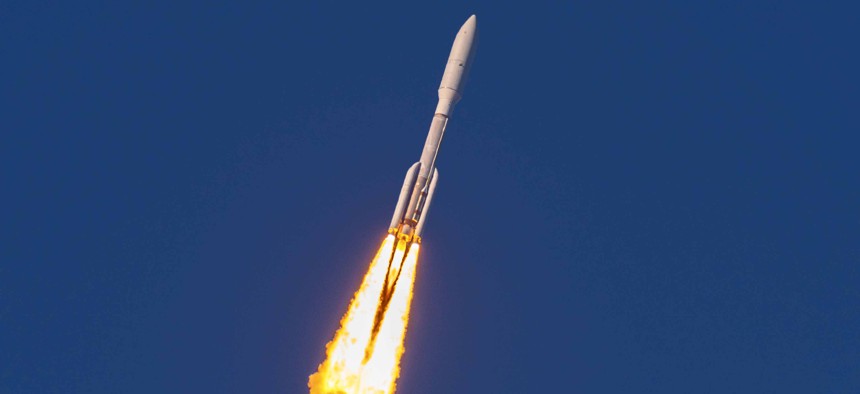
An Atlas V rocket launches at Cape Canaveral Space Force Station, Fla., March 1, 2022. Space Force / Joshua Conti
Space Force Unworried by Predictions of Commercial-Launch Consolidation
There’s “certainly enough capacity,” the service’s No. 2. officer said—though “more is always better.”
The U.S. Space Force is not worried if a few makers of light-lift rockets go out of business, the service’s No. 2 officer said Thursday.
“I will say there are a lot of launch providers out there…you do wonder if all of those launch providers can be sustained over the long term, but I would say for sure, there's certainly enough capability available today to meet our needs for the foreseeable future,” Vice Chief of Space Operations Gen. David Thompson said during the annual Defense One Tech Summit.
The market for small launch vehicles is “way too crowded,” said Todd Harrison, a longtime defense analyst who is currently managing director of Metrea Strategic Insights.
Even companies that made it through developmental stages, such as Virgin Orbit, have shut down because the market wasn't materializing in the way some thought it would, Harrison said at the summit.
“My prediction is, within the next year or two, we're going to see more of the small launch companies just fold up shop. So I wouldn't say it's consolidation. I would say we're going to see some exits in the small launch,” Harrison said.
But the market for medium and heavy launch vehicles is well consolidated, with Elon Musk’s SpaceX essentially running the show, Harrison said. ULA and Blue Origin are both in the picture, but SpaceX’s Falcon 9 rocket is the “workhorse, by far,” he said, adding that once the company’s new Starship heavy-lift rocket gets up and running, he foresees it also dominating in the market.
There are four main types of rockets: small lift, which can orbit payloads of up to 2,000 kilograms; medium lift, 2,000 to 20,000 kg; heavy lift, 20,000 to 50,000 kg; and super-heavy, anything above 50,000 kg.
“I think there is some concern at the large end of the launch market that, well, maybe there aren't that many providers. Maybe we are getting to the point we're a little too dependent on SpaceX. It would be nice to see some of these other companies make a little more progress, a little faster, and be cost-competitive,” Harrison said.
The Space Force does want a bigger pool for medium and heavy vehicles, Thompson said: “More is always better.”
Pentagon leaders have set up their next competition for satellite launches to usher new entrants into the heavy-lift market. In February, the Space Force announced that it would split the bidding for dozens of launches into two groups. “Lane 1” will include the “more risk tolerant” missions, “Lane 2” the more challenging and “critical” ones.
By separating a pool of easier missions to bid for, Thompson and other Space Force leaders aim to help emerging companies better compete against industry leaders like SpaceX and ULA.
“I think now, the way they have set it up with two assured providers and a lane for additional ones, we would love to have more and I think the strategy that is developed now allows for that and I think we would be excited to bring on more of those commercial providers,” the general said.







